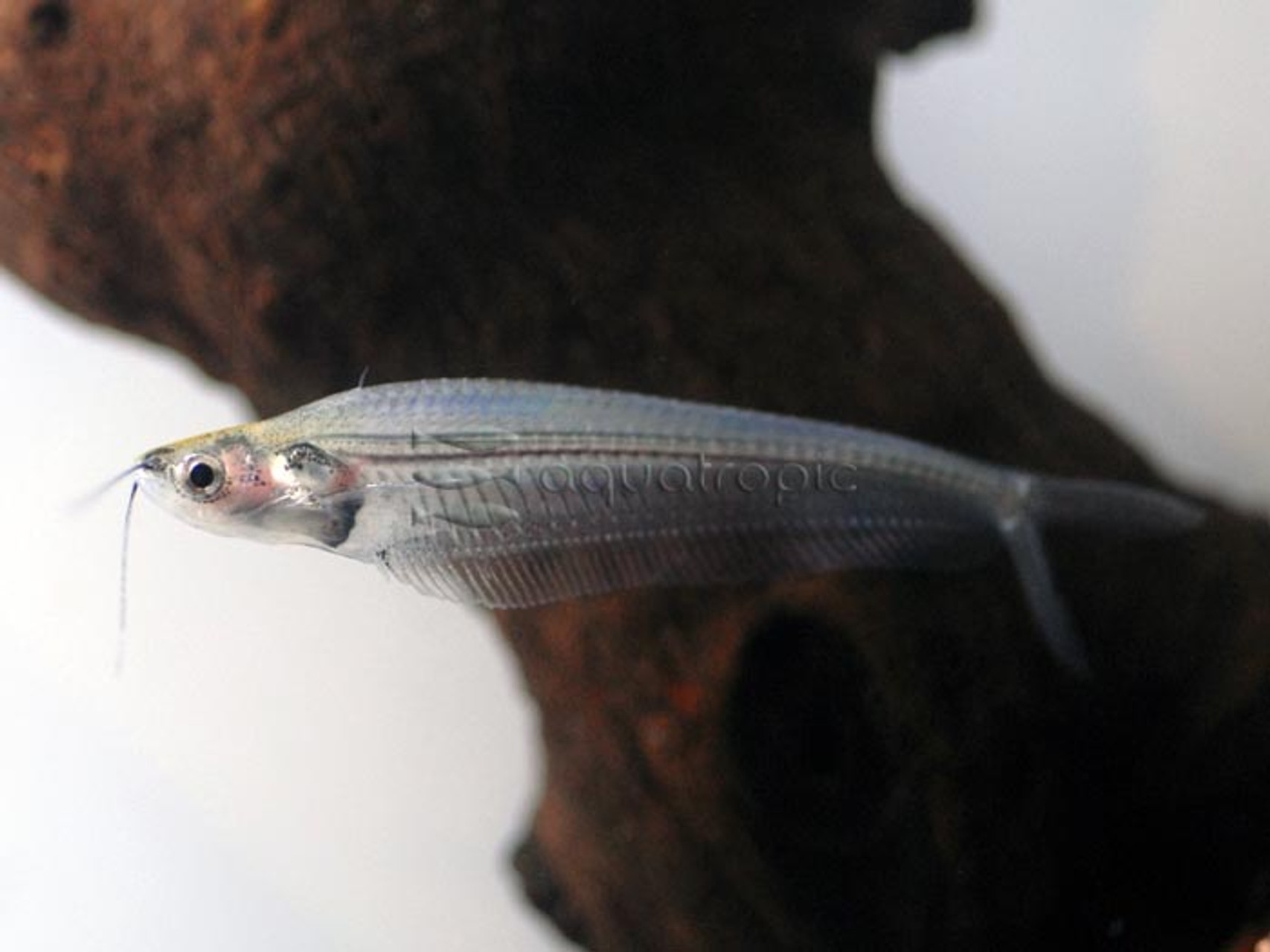Glass Catfish (Kryptopterus vitreolus)

This will be an aquatic story of mistaken identity (a common theme in the aquarium trade).
The Glass Catfish is an unmistakable species, beloved by generations of aquarists for its beautifully transparent body and graceful manner of swimming. Except, it turns out that we were indeed very much mistaken. Though it has been kept in aquariums since as far back as the 1930’s (being featured in Innes’ Exotic Aquarium Fishes), the correct identity would elude us until quite recently.
In a 2013 paper titled “After eighty years of misidentification, a name for the glass catfish”, the Glass Catfish was described as a new species, Kryptopterus vitreolus. It’s now known that this fish is endemic to certain coastal drainages emptying into the Gulf of Thailand, possibly forming two disjunct populations across the Gulf. Previously it had been confused with a close relative found throughout Southeast Asia, K. bicirrhis, but it’s actually quite easy to tell these two apart, as that species is opaque (i.e. not glassy at all, not even a little bit).
An even closer (and equally transparent) relative which has sometimes been confused with the Glass Catfish is K. minor, now known to be endemic to Borneo. A third transparent species, K. piperatus is reported from Java, and together these three form a lineage that has speciated only recently following the isolation of their respective geographies. Neither of these other faux-Glass Catfishes ever find their way into the aquarium trade.
An interesting peculiarity of this genus that has been widely reported on by researchers it the presence of electrosensory pores scattered along various parts of the fish. They are abundant on the head and form regular series along the back and sides, as well as short rows situated along the anal fin rays and in portions of the caudal and pectoral fins. They are open-ended (i.e. in contact with the external environment) and filled with a potassium-rich substance, similar to the electroreceptor system of sharks. Kryptopterus occurs in turbid, blackwater habitats with little water flow, so these specialized organs no doubt help it to stay aware of its surroundings.
The Glass Catfish is a timid species and won’t fare well alongside boisterous tankmates. There are many excellent choices available from Southeast Asia, such as small cyprinids like Brevibora, Trigonostigma, and Bororas. Miniature loaches like Ambastaia sidthimunki or Pangio sp. work great too, as do some of the smaller gouramis, like Trichopsis pumila or Ctenops nobilis. Of course, plenty of other suitable options can be found outside this region, like smaller tetras, rainbowfishes, catfishes, etc.
Kryptopterus are presumed to feed on small invertebrates, though precisely which aren’t known. Insect larvae? Water fleas? Probably a little bit of this and a sprinkling of that. But in captivity they will eat most anything that floats on by, in typical catfish fashion. For their ease of care and their unusual appearance, this unorthodox little fish makes for a striking and most excellent addition to a community aquarium.